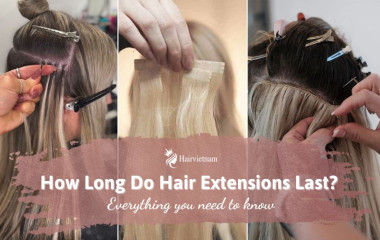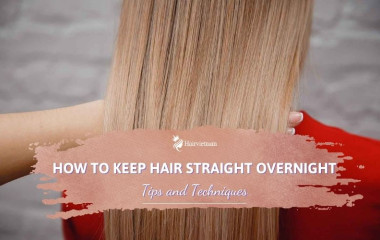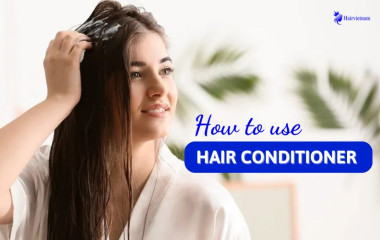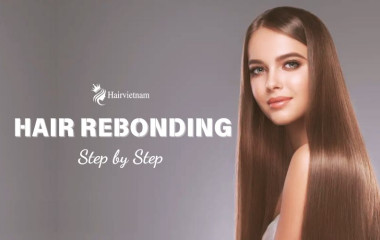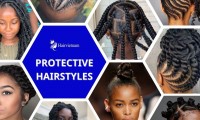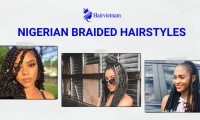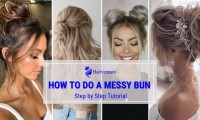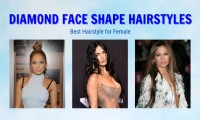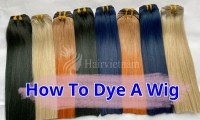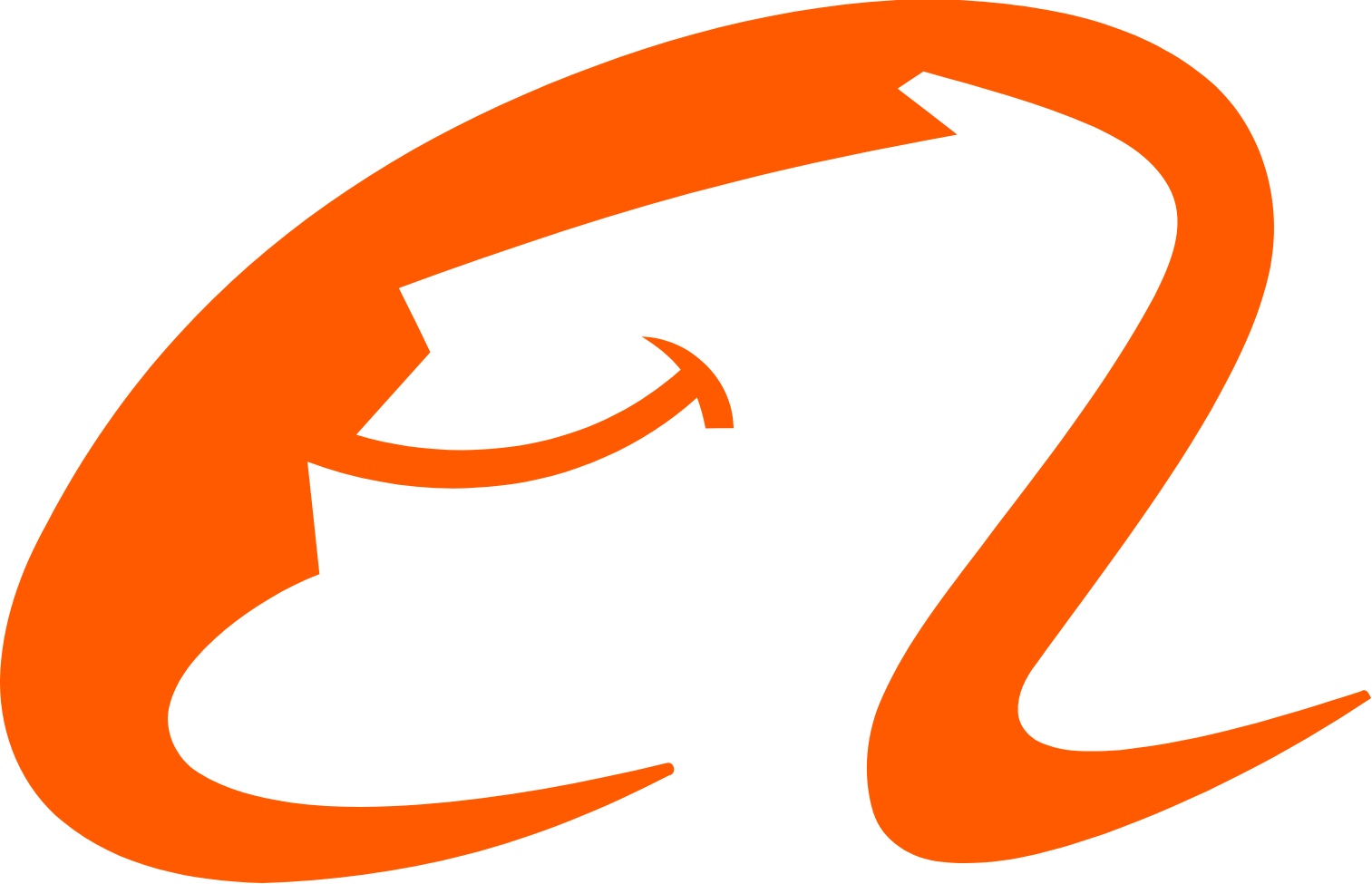How To Fix Damaged Hair: Effective Tips for Hair Repair
Are you tired of dealing with damaged hair? How to fix damaged hair? Discover effective tips and techniques to repair and restore your hair's health. From hair breakage to perm damage, this comprehensive guide will help you revive your locks and achieve beautiful, lustrous hair.
Damaged hair can be a result of various factors, such as excessive heat styling, chemical treatments, environmental factors, or improper hair care routines.
In this article, we will explore expert-recommended strategies and home remedies to fix damaged hair, ensuring your tresses regain their strength, shine, and vitality.
Common causes of hair damage
Hair damage can occur due to various factors. Some common causes include:
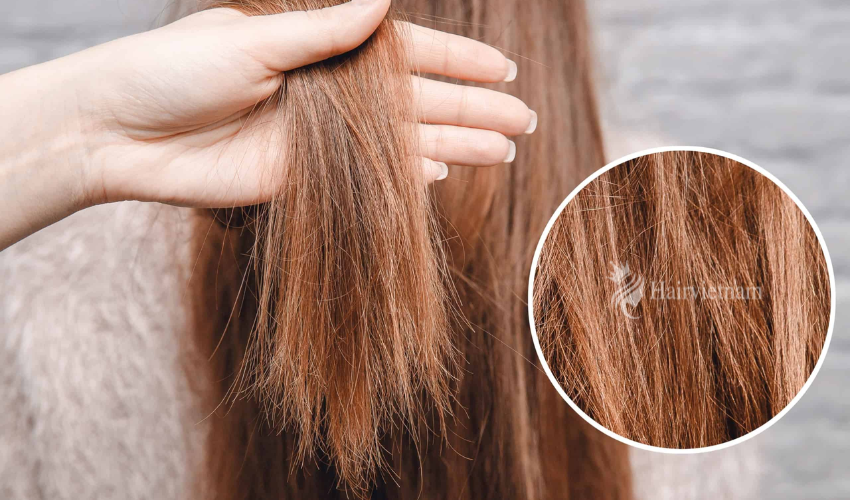
Common causes of hair damage
Overexposure to heat: Frequent use of hot styling tools such as flat irons, curling irons, and hair dryers can lead to heat damage, making the hair brittle and prone to breakage.
Chemical treatments: Hair treatments like perming, relaxing, and coloring involve the use of chemicals that can damage the hair if not done correctly or if done too frequently.
Improper hair care practices: Rough handling of hair, excessive brushing, using the wrong hair care products, or not following a proper hair care routine can contribute to damage.
Environmental factors: Exposure to sunlight, pollution, harsh weather conditions, and chlorine in swimming pools can cause damage to the hair.
Over washing or excessive shampooing: Frequent washing and using harsh shampoos can strip the hair of its natural oils, leading to dryness and damage.
Lack of moisture: Insufficient hydration and moisture can result in dry, brittle hair that is more susceptible to damage.
The Different Types of Hair Damage

The Different Types of Hair Damage
Breakage: Hair breakage occurs when the hair strands become weak and brittle, leading to snapping or splitting of the hair shafts.
Split ends: Split ends occur when the protective outer layer of the hair cuticle becomes damaged, resulting in the splitting of the hair shafts.
Chemical damage: Chemical treatments like hair coloring, perming, or relaxing can cause damage by weakening the hair structure or altering its natural composition.
Heat damage: Excessive heat from styling tools can cause the hair to become dry, brittle, and prone to breakage.
Environmental damage: Sun exposure, pollution, and harsh weather conditions can strip the hair of moisture and cause damage.
Protein loss: Lack of protein in the hair can make it weak and more prone to damage.
Over processing: Overusing chemical treatments or styling tools without adequate breaks can lead to cumulative damage over time.
>> Learn More: How to Wash Clip-In Hair Extensions: A Step-by-Step Guide
The significance of proper hair care routine for all hair types:
Regardless of hair type, following a proper hair care routine is crucial for maintaining healthy hair and preventing damage. Here are some essential practices for a healthy hair care routine:

The significance of proper hair care routine for all hair types
Regular cleansing: Use a gentle shampoo suitable for your hair type and avoid over washing. Consider using a sulfate-free shampoo to prevent excessive drying.
Conditioning: Apply a suitable conditioner after shampooing to restore moisture and improve manageability. Deep conditioning treatments can be done periodically for extra nourishment.
Heat protection: Use heat protectant products before using hot styling tools to minimize heat damage.
Gentle handling: Avoid rough towel drying and use a wide-toothed comb or a brush with soft bristles to detangle hair gently.
Avoid excessive styling: Minimize the use of heat styling tools and harsh chemical treatments to prevent damage.
Protect from environmental factors: Wear a hat or use protective products to shield your hair from the sun, wind, and pollution.
Hydration and nutrition: Maintain a balanced diet, drink plenty of water, and consider using hair care products that provide hydration and nourishment.
Regular trims: Trim your hair regularly to remove split ends and prevent further damage.
Assessing the Damage
To determine the extent of hair damage, there are several indicators to look for. Signs of damaged hair include split ends, dryness, frizz, brittleness, excessive breakage, and a lackluster appearance.
Additionally, the hair may feel rough or straw-like to the touch. Consulting a professional stylist is highly recommended for a comprehensive assessment of the hair's condition.
They can provide valuable insights and suggest appropriate treatments based on your specific needs. However, if professional consultation is not immediately accessible, there are some DIY techniques you can try.
These include performing a strand test, examining the hair's elasticity, and assessing the overall texture and appearance. Remember that proper assessment is crucial for addressing hair damage effectively.
Essential Steps for Repairing Damaged Hair
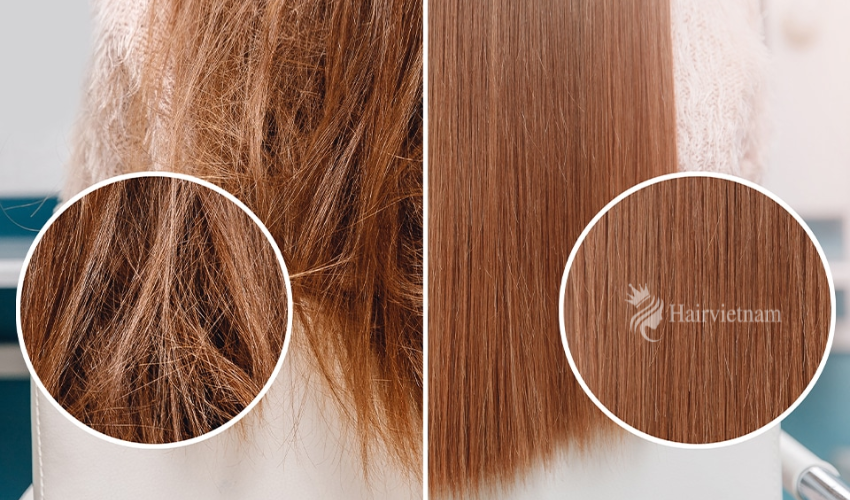
Essential Steps for Repairing Damaged Hair
Step 1:
Trim and remove split ends: Start by getting a trim to remove split ends and prevent further splitting up the hair shaft. Regular trims every 6-8 weeks will help maintain healthy ends.
Step 2:
Gentle cleansing and conditioning techniques: Use a mild shampoo to gently cleanse the hair, focusing on the roots, and a nourishing conditioner to restore moisture. Avoid rough towel drying and opt for blotting or air-drying instead.
Step 3:
Incorporating protein treatments to strengthen hair: Treatments such as protein masks or deep conditioning products can help rebuild the hair's strength and repair damaged areas. Look for products that contain hydrolyzed proteins for better absorption.
Step 4:
Hydrating and moisturizing damaged hair: Use hydrating hair masks or leave-in conditioners to restore moisture to dry and damaged hair. Look for ingredients like argan oil, shea butter, or aloe vera, which help nourish and moisturize the hair.
Step 5:
Nourishing the scalp for optimal hair growth: A healthy scalp is essential for promoting hair growth. Use scalp treatments or oils to stimulate circulation, reduce inflammation, and nourish the scalp. Massaging the scalp can also improve blood flow and stimulate hair follicles.
Step 6:
Protective styling to prevent further damage: Opt for hairstyles that minimize tension and manipulation, such as braids, buns, or loose styles. Avoid excessive heat styling and use heat protectant products when necessary. Silk or satin pillowcases and hair accessories can also help reduce friction and breakage.
>> Learn More: How to care for Human Hair Weave?
Natural Treatments for Damaged Hair
Deep conditioning treatments with natural ingredients: Utilize deep conditioning treatments using natural ingredients like avocado, coconut oil, honey, or yogurt to nourish and hydrate damaged hair. Apply the mixture to damp hair, leave it on for 20-30 minutes, then rinse thoroughly.
Oil treatments for rejuvenating and repairing damaged hair: Apply warm oil treatments using oils like argan, olive, or jojoba to replenish moisture and restore hair health. Massage the oil into the scalp and through the lengths of the hair, leave it on for a few hours or overnight, then wash it out.
Nutritional and dietary adjustments for promoting healthy hair growth: Ensure a well-balanced diet with foods rich in vitamins, minerals, and proteins to support healthy hair growth. Include foods like salmon, eggs, spinach, nuts, and seeds for essential nutrients.
DIY hair masks and packs for restoring hair health: Create homemade hair masks using ingredients like banana, aloe vera, eggs, or mayonnaise. These masks can provide nourishment, repair damage, and enhance the overall health of the hair.
Conclusion:
In conclusion, damaged hair can be repaired and restored with the right knowledge and techniques. By following the steps outlined in this comprehensive guide, you can achieve healthier and more beautiful hair.





_cr_380x240.jpg)
